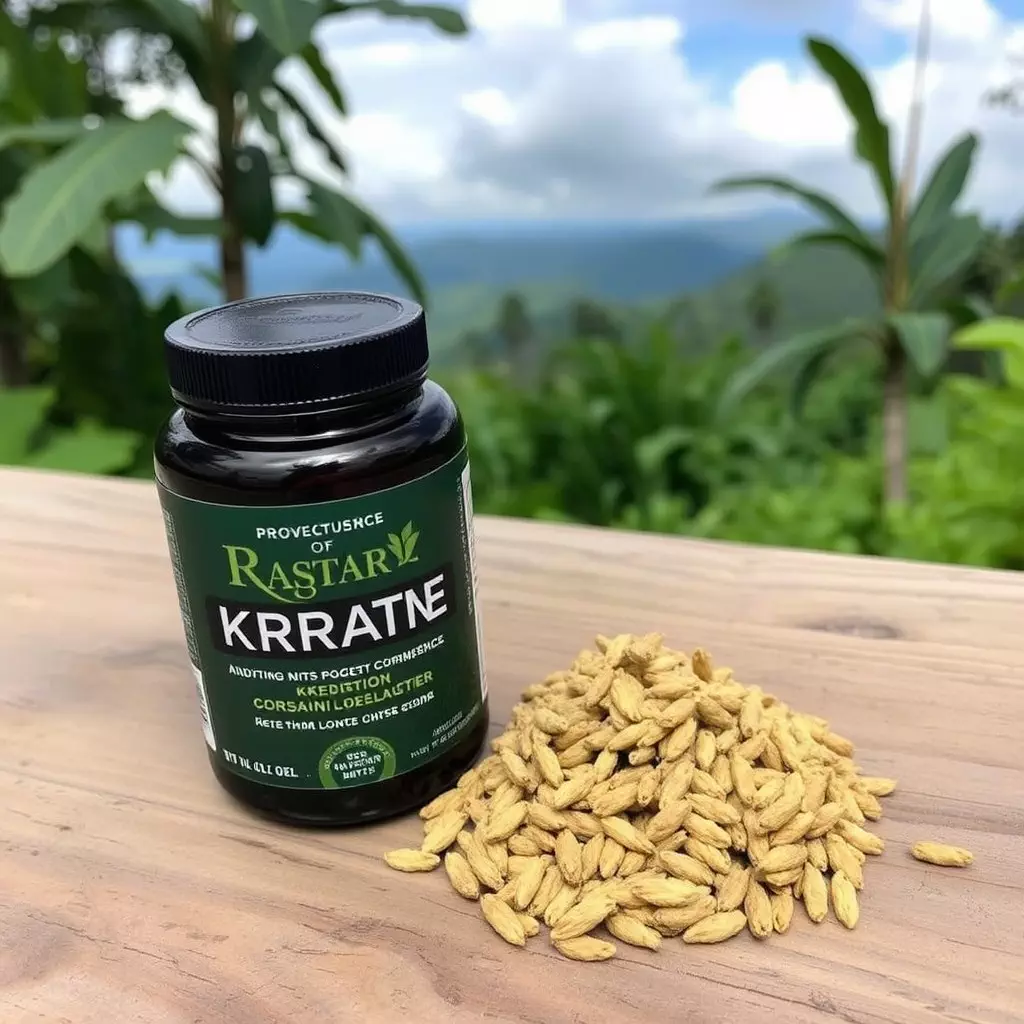Muscle soreness post-exercise is commonly caused by microscopic tears in muscle fibers, which trigger a natural repair process that can lead to both muscle growth and discomfort. Kratom, derived from the Mitragyna speciosa tree, has been recognized for its potential to alleviate this pain through its active alkaloids, mitragynine and 7-hydroxymitragynine, which engage with opioid receptors in the central nervous system. For those seeking natural recovery methods, kratom can be a viable option when used responsibly within a post-workout routine. It's available in various forms, including tea, capsules, and powders, with some users opting for a more convenient intake method. Enhancing the healing process, diffusers with 'Thieves' essential oil can be used alongside kratom, offering complementary anti-inflammatory benefits and amplifying its effects. However, it is imperative to use kratom cautiously due to individual differences in its impact and potential interactions with other substances. Its legal status varies by region, so consulting healthcare professionals before using kratom for muscle soreness relief is essential. The 'Diffuser Thieves' blend is a safe and effective way to combine the benefits of kratom with the therapeutic properties of essential oils, promoting relaxation and pain relief while minimizing side effects. Always ensure proper dosing and source high-quality, lab-tested kratom from reputable suppliers for optimal and safe outcomes.
Muscle soreness can be a persistent challenge for individuals engaged in rigorous physical activities or those recovering from injuries. Exploring natural remedies, kratom supplements have gained attention for their potential to alleviate muscle pain and enhance recovery. This article dissects the relationship between muscle soreness and the role of kratom, offering insights into effective relief strategies. We delve into how incorporating kratom can be a game-changer for your post-workout recovery process. Furthermore, we’ll guide you through the intricacies of dosing, safety considerations, and the specific benefits of the Diffuser Thieves Blend—a potent combination that promises to elevate your muscle soreness relief experience.
- Understanding Muscle Soreness and the Role of Kratom Supplements
- Effective Muscle Soreness Relief Strategies Incorporating Kratom
- Enhancing Your Recovery with Kratom: Dosing, Safety, and the Diffuser Thieves Blend
Understanding Muscle Soreness and the Role of Kratom Supplements

Muscle soreness can arise from a variety of activities, ranging from intense exercise to daily physical tasks. The discomfort is often a result of microscopic tears in muscle fibers, which occur when they are subjected to stress or strain beyond their usual capacity. This natural response to repair and strengthen the muscles can be both beneficial for growth and challenging to manage post-exertion. Enter kratom supplements, which have gained attention for their potential role in alleviating muscle soreness. Traditionally used in Southeast Asian cultures for pain relief and energy enhancement, kratom contains compounds known as alkaloids, particularly mitragynine and 7-hydroxymitragynine, which are believed to interact with the body’s opioid receptors and central nervous system. These interactions may provide analgesic effects, helping to ease the pain associated with muscle soreness. For those seeking a natural approach to recovery, incorporating kratom into a post-workout routine might offer significant relief.
Incorporating kratom supplements as part of a recovery strategy should be done with careful consideration and responsible use. While the traditional preparation method involves drying kratom leaves and brewing them into a tea, modern consumers often opt for capsules or powders for convenience. Additionally, essential oil diffusers infused with ‘Thieves’ oil, known for its anti-inflammatory properties, can complement the use of kratom by creating an environment conducive to healing and relaxation. It’s important to note that while kratom may be beneficial for muscle soreness relief, it is not a one-size-fits-all solution. Individuals should consult with healthcare professionals before integrating kratom into their health regimen, especially considering its potential for interaction with other substances and its regulatory status in various regions.
Effective Muscle Soreness Relief Strategies Incorporating Kratom

When engaging in physical activities or intense workouts, muscle soreness is a common challenge that can hinder recovery and performance. To address this issue, individuals often seek effective relief strategies. Kratom, a supplement derived from the leaves of the Mitragyna speciosa tree, has gained attention for its potential benefits in alleviating muscle soreness. Users typically consume kratom in various forms, such as capsules, teas, or powder, and some report its effectiveness in managing post-exercise discomfort. For those who prefer an aromatic approach, incorporating kratom into a diffuser with essential oils like those found in the popular ‘Thieves’ blend can create a synergistic effect. The Thieves diffuser oil blend, known for its antimicrobial properties, may enhance the calming and analgesic qualities of kratom when diffused, promoting a soothing atmosphere conducive to recovery. It’s important to note that while anecdotal evidence supports these claims, scientific research is still emerging, and individuals should consult healthcare professionals before integrating kratom into their muscle soreness relief regimen. Additionally, the correct dosage and proper strain of kratom are crucial factors for maximizing its potential benefits without overstepping safe usage limits.
Enhancing Your Recovery with Kratom: Dosing, Safety, and the Diffuser Thieves Blend

When incorporating kratom supplements into a muscle soreness relief regimen, it’s crucial to consider dosing and safety to enhance your recovery process effectively and responsibly. Kratom, derived from the leaves of the Mitragyna speciosa tree, is known for its potential effects on pain relief and relaxation. For those looking to alleviate muscle soreness post-exercise, finding the right dosage is key. Generally, users report beneficial outcomes with moderate doses; however, individual sensitivity means that optimal dosing can vary. It’s important to start low and go slow, monitoring how your body responds before adjusting the dose as needed.
Safety should always be a priority when exploring any supplement. When it comes to kratom, this is particularly true due to its potent effects. To mitigate risks, always source high-quality, lab-tested kratom products from reputable vendors. Additionally, the Diffuser Thieves Blend, specifically formulated for aromatherapy diffusers, can be a safe and effective way to enhance the therapeutic experience. This blend combines kratom with essential oils, designed to maximize its benefits while minimizing potential side effects. When using the Diffuser Thieves Blend, follow the manufacturer’s instructions for optimal results. Proper dosing, in conjunction with safe usage practices, can contribute to a more effective recovery strategy, helping to ease muscle soreness and promote overall well-being. Always consult with a healthcare professional before introducing kratom into your regimen, especially if you have pre-existing health conditions or are taking other medications.
Muscle soreness can be a significant hindrance to both athletic performance and daily activities. This article has explored the multifaceted nature of muscle soreness, its mechanisms, and how kratom supplements may offer relief. By understanding the role of kratom in muscle recovery, readers have been equipped with knowledge on effective strategies that incorporate this natural supplement. Among these strategies, the ‘Diffuser Thieves’ blend stands out as a practical and aromatic approach to leveraging kratom for its potential benefits. As a final note, it is crucial to adhere to proper dosing and safety measures when incorporating kratom into one’s recovery routine. For those seeking natural alternatives to manage muscle soreness, the insights provided here offer a promising starting point.






